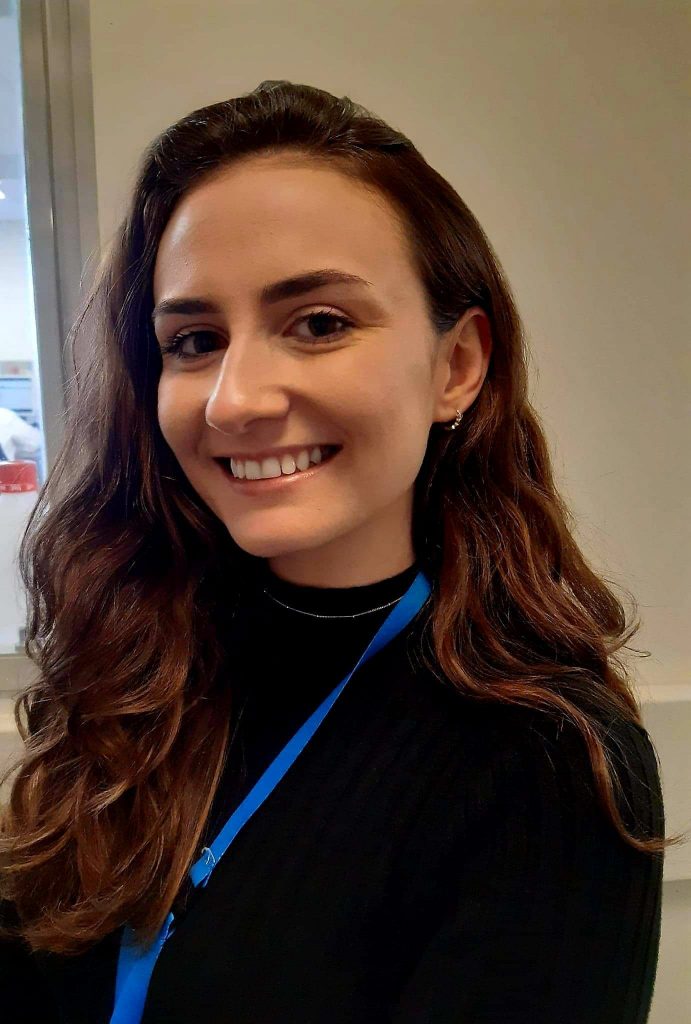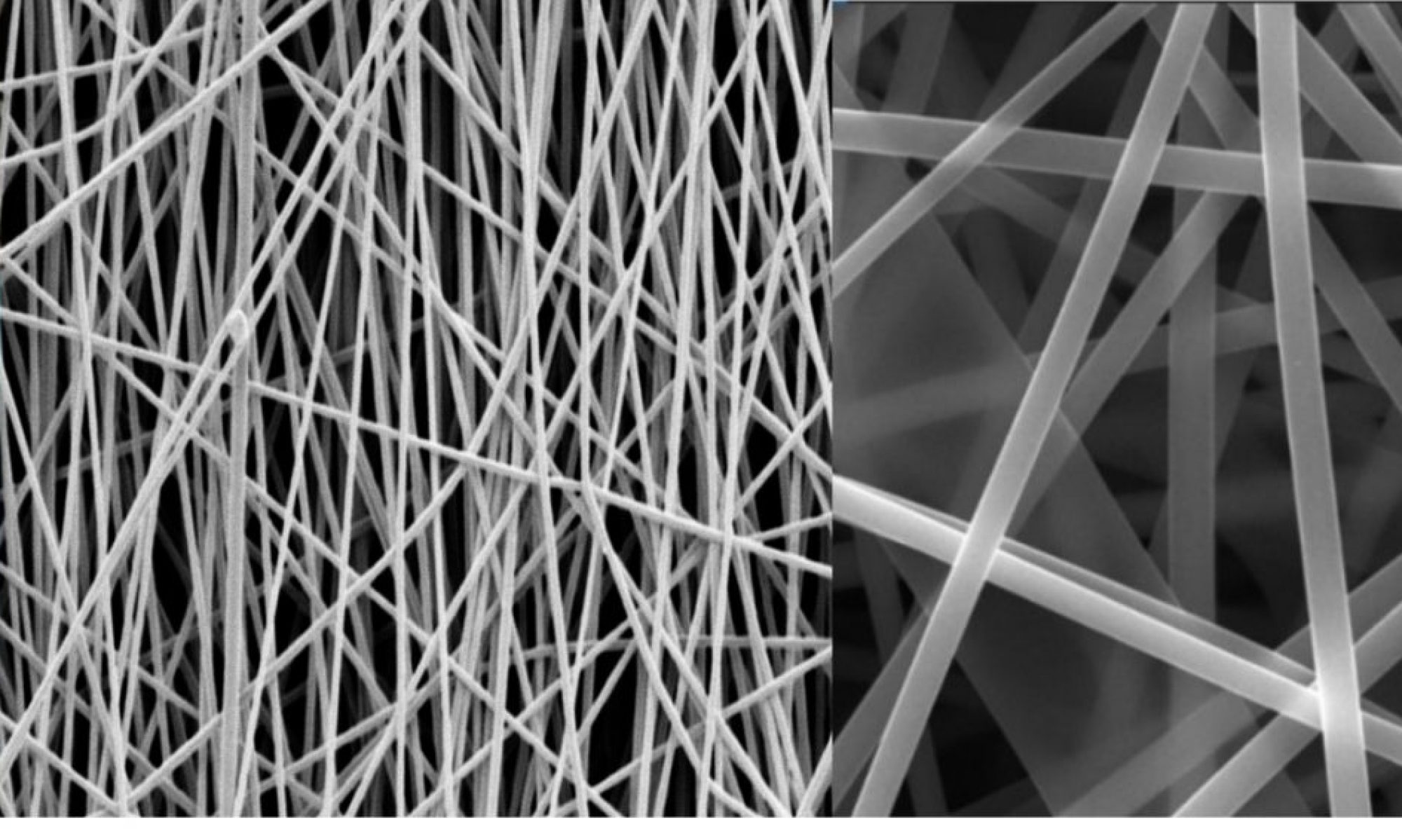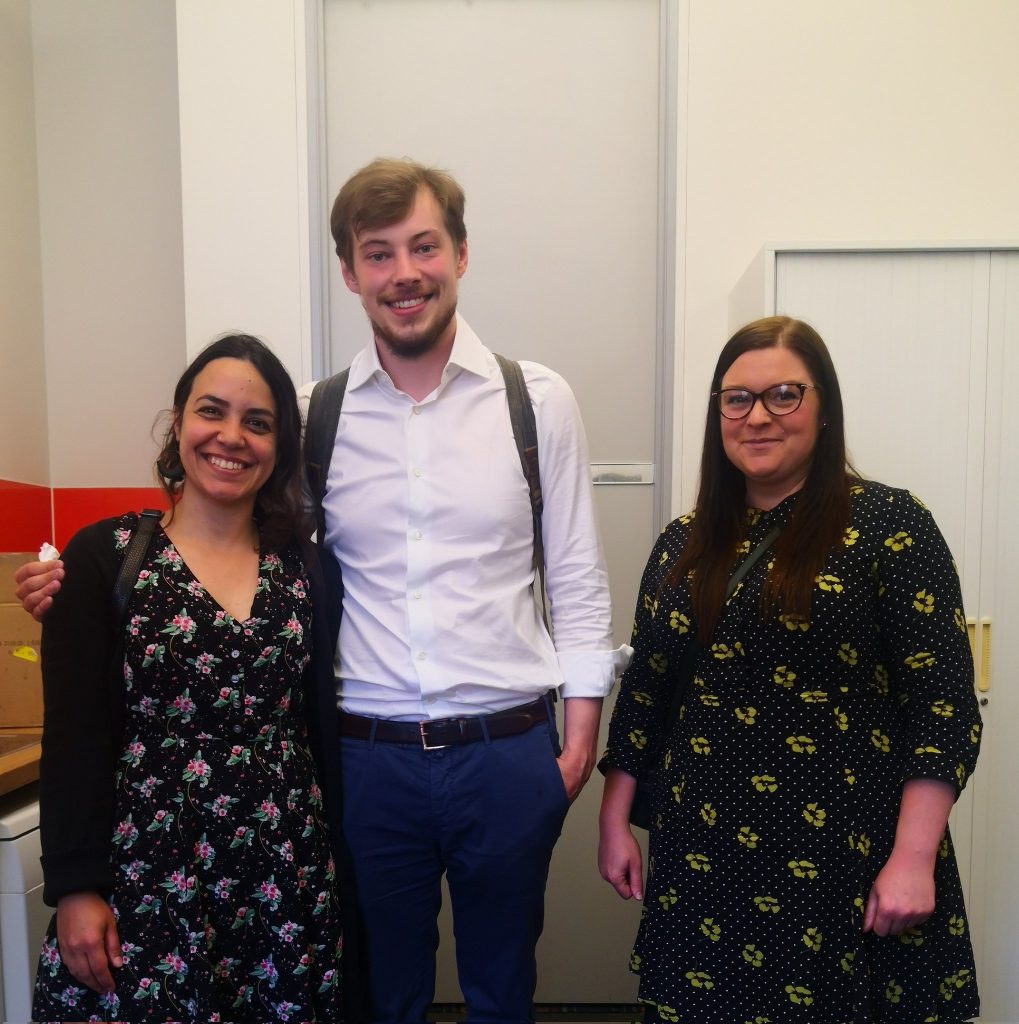Congratulations to Linh for passing her PhD viva on the 12th July 2022. Linh’s PhD thesis studied NiFe LDH on electrospun fibres as freestanding oxygen electrocatalysts. Well done Linh! Thanks to Frank Marken (Bath University) and Lauri King (Machester Metropolitan) for their time and effort in promoting great discussion!
UK RFB Network Annual Meeting hosted at Queen Mary University of London
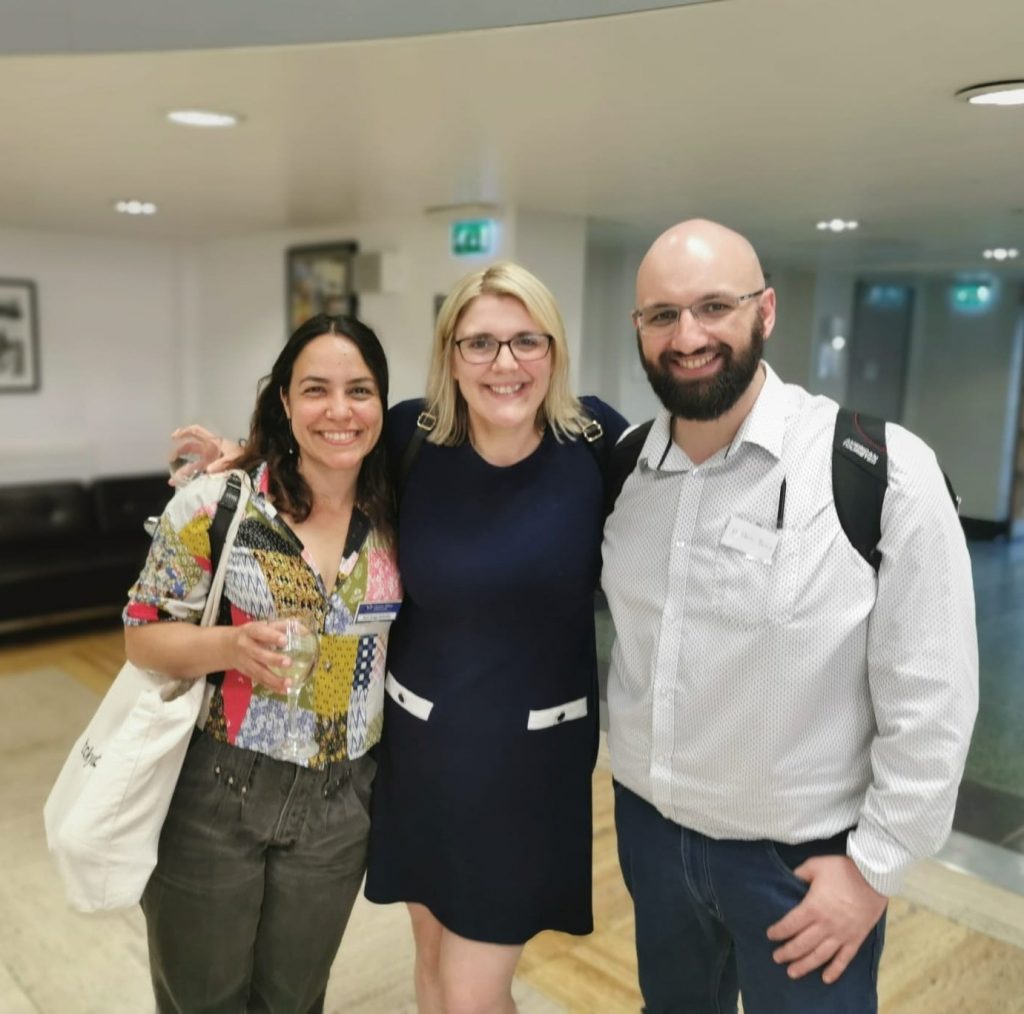
The 6th Annual Meeting of the UK Redox Flow Battery Network (UKRFBN) took place on the 11th July 2022. This year the event was held at Queen Mary University of London and hosted by Ana Jorge Sobrido, who is an active member of the UKRFBN Committee.
Around 80 people registered for this hybrid event, with 45 people attending in person. Keynote talks from industry (Shell and RFC Power) gave a great overview of the potential of redox flow batteries moving forward and their role in decarbonising our energy supply.
PhD students and postdocs had the opportunity to present their work in flow batteries with their talks and also in the poster session.
Ana participates in the EPSRC workshop on the Future of Fundamental Electrochemistry in the UK – 7th-8th July 2022
Organised by Prof Dryfe (University of Manchester), Prof Katherine Holt (University College London), Dr Mark Symes (University of Glasgow) and Dr Upul Wijayantha (Loughborough University), this stimulating event gathered around 40 academics from UK institutions working on topics with a significant electrochemistry component to debate current challenges of the area and discuss potential solutions.
The workshop was held in beautiful Gregynog Hall in mid Wales. Actions will follow to create a UK Electrochemistry Hub and unite practices and standards in the different areas underpinning electrochemistry.
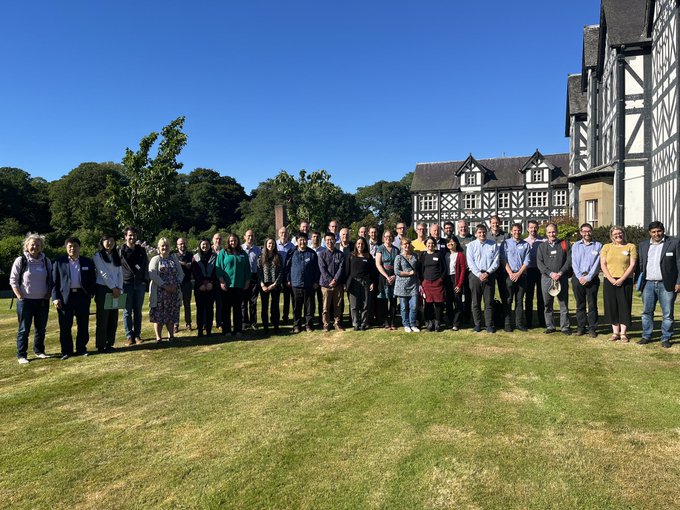
Ana participated in UKRI FLF Innovation Fellows meeting in Birmingham – June 2022
Ana met really interesting people, made useful connections and participated in really good discussions. Thanks to @KTNUK for organising the event!
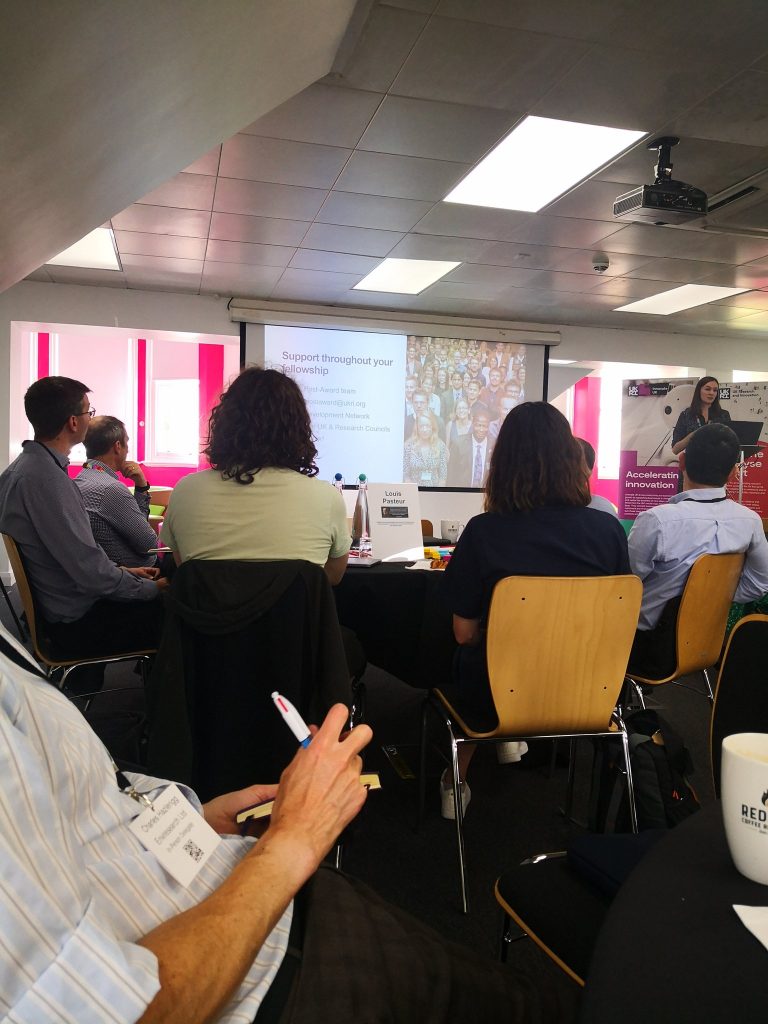
Szymon passes his PhD viva – 28th June 2022
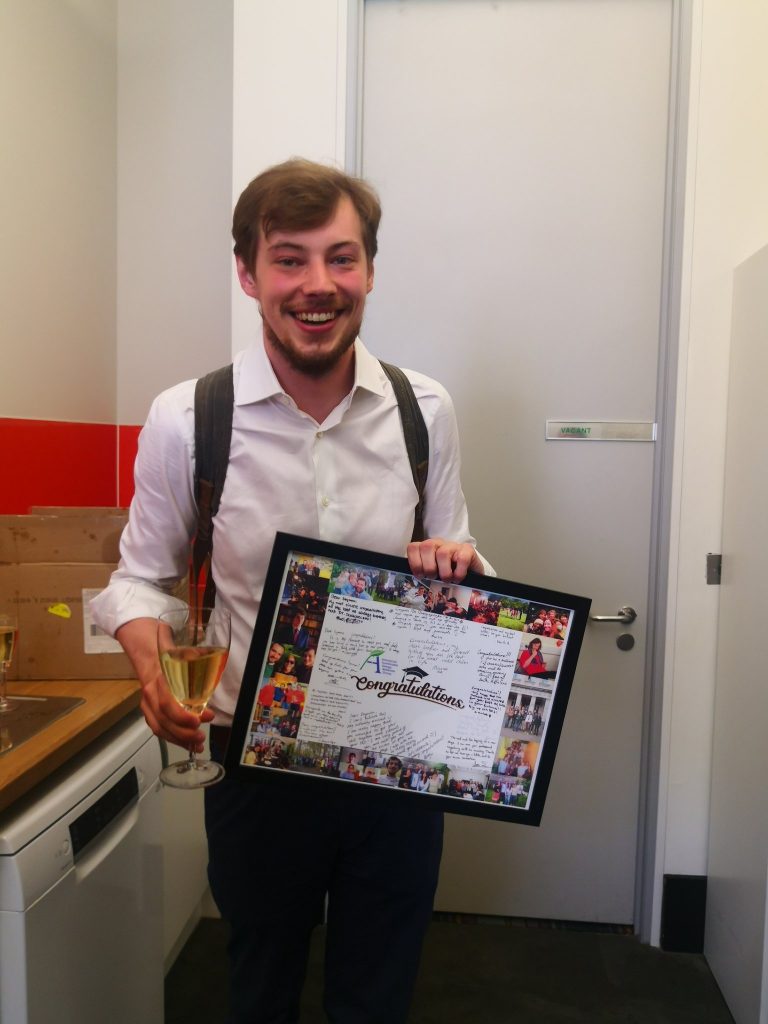
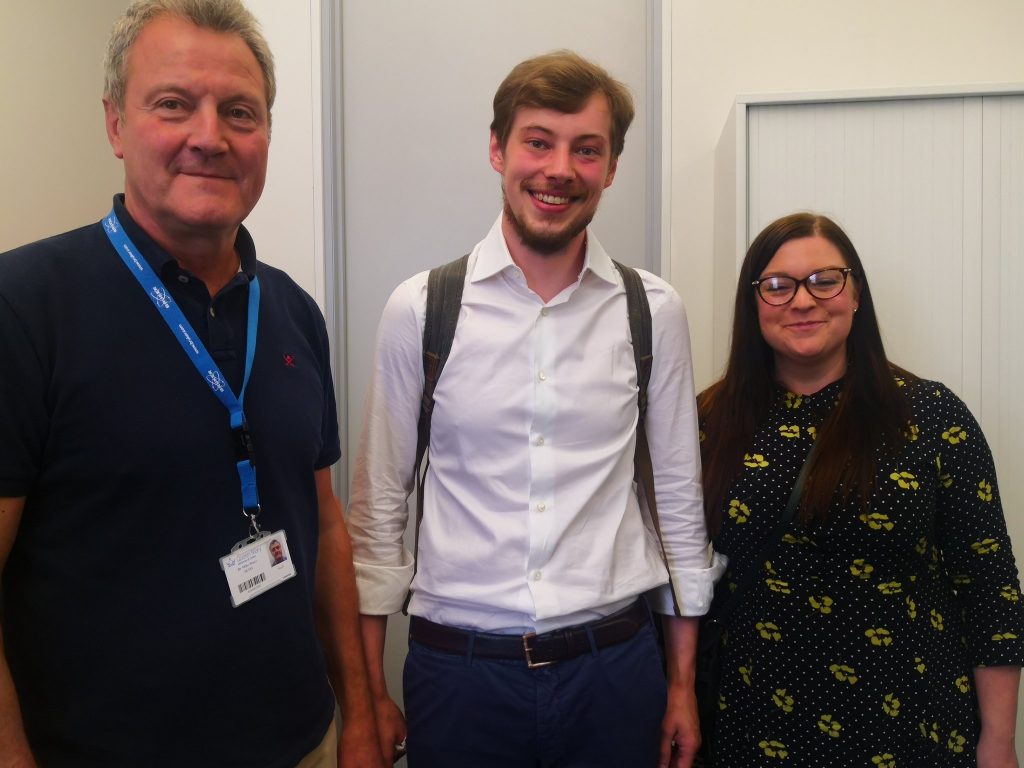
Many congratulations to Szymon who passed his PhD viva with minor corrections! Szymon’s PhD thesis studied cobalt-based oxygen electrocatalysts. A lot of struggle along the way, but well done Szymon! And thanks so much to Caroline Knapp (UCL Chemistry) and Mike Reece (Queen Mary) for taking the time to read his thesis and being such good examiners, too!
Festival of Communities – June 2022
The group had a fantastic time at the Festival of Communities, held at QMUL Mile End Campus on the 12th June 2022. Our stand ReCharge showcased the world of batteries and how to use sustainable resources to produce sustainable devices. People attending were able to light an LED building a lemon battery, also understand a bit about what a redox flow battery is. We showed how candyfloss is somewhat similar to the process we use to produce our fibres from biomass that will then become electrodes for batteries! The little ones had lots of fun with the giant jenga we built following the paper by E. Driscoll from Birmingham. It was a great success!
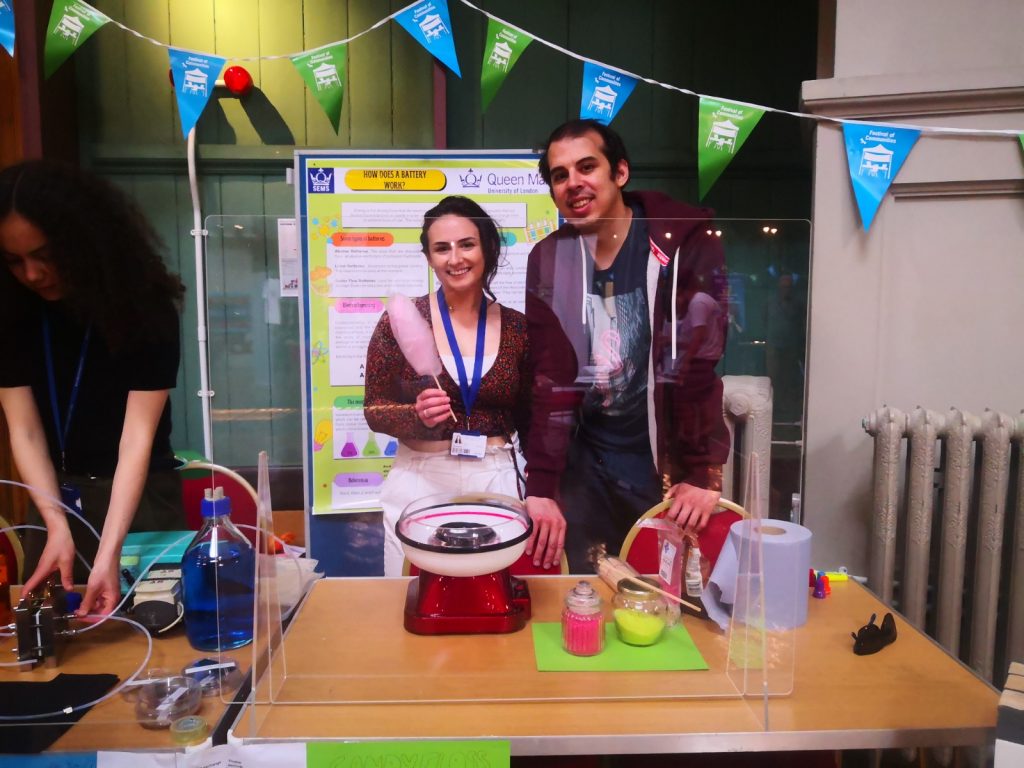
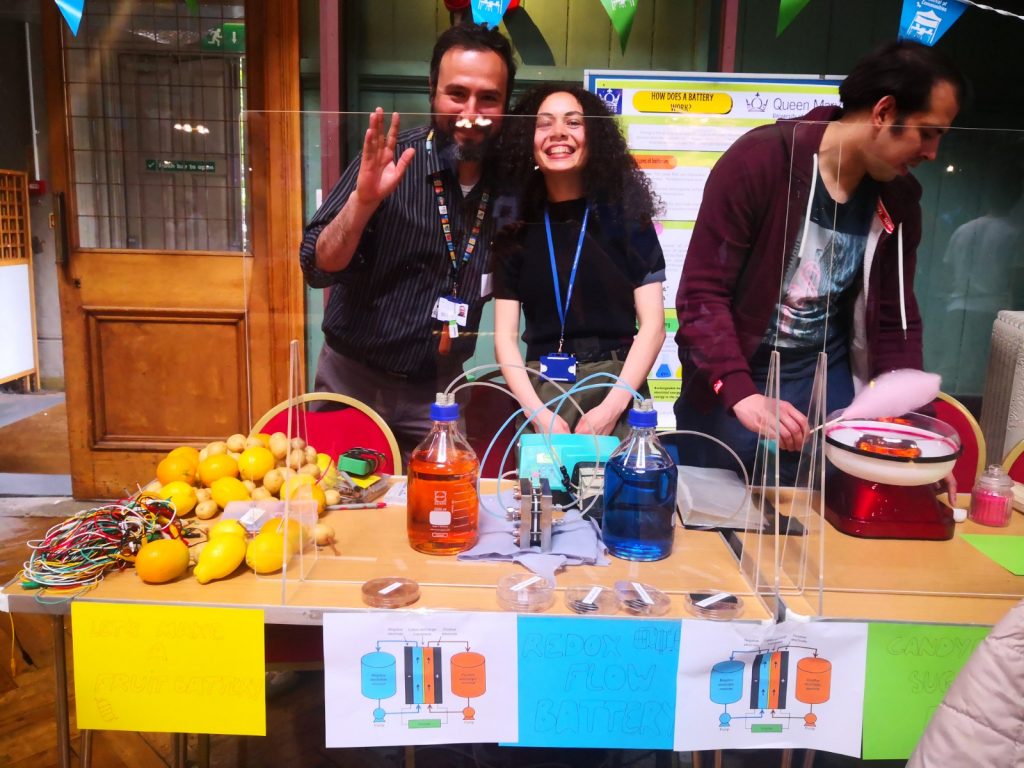
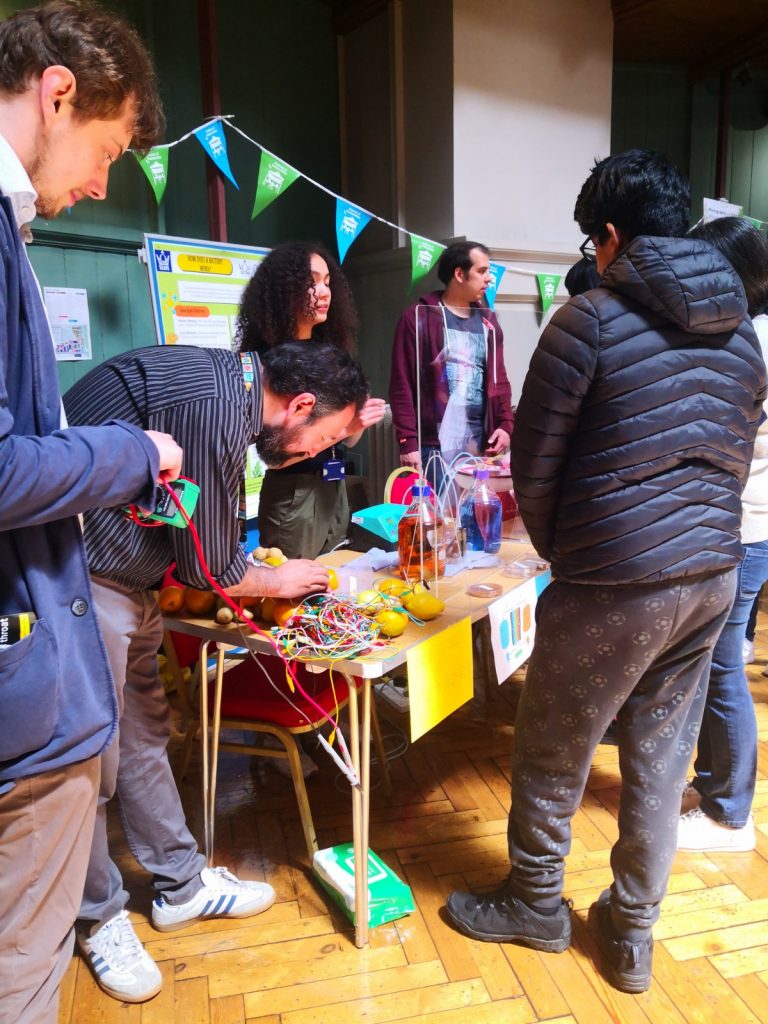
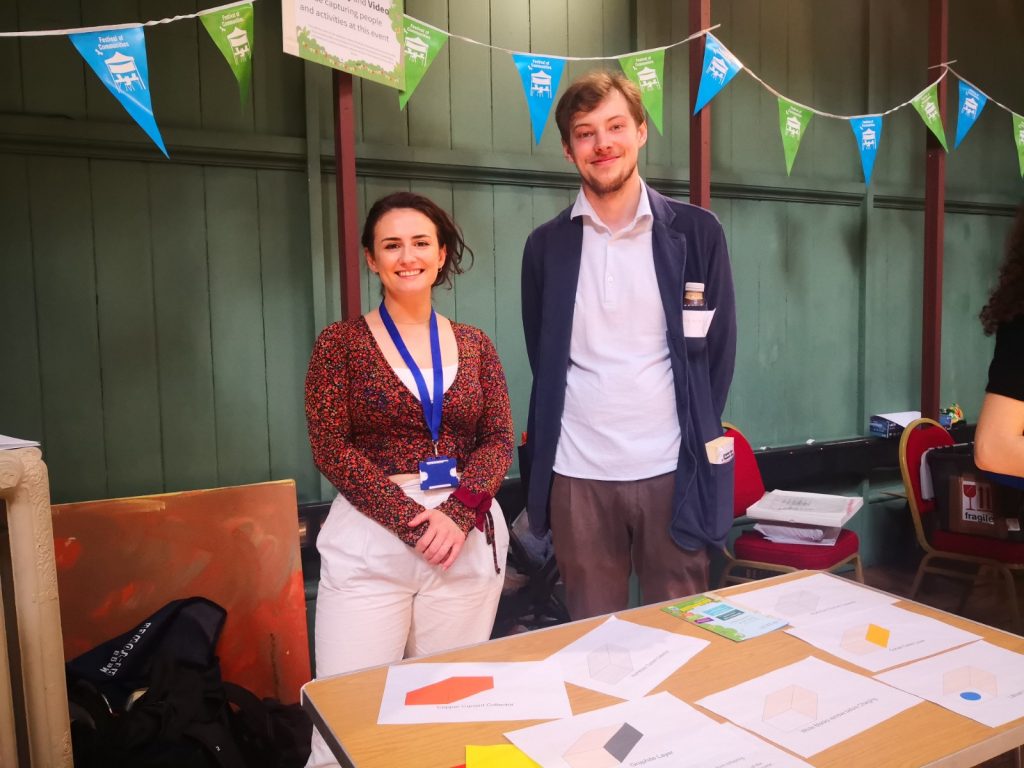

Thanks Hattie, Eneith, Pavel, Szymon, Michael, Jesus and Mauricio for all your efforts in making it possible!
Welcome to Mauricio!

We welcome Mauricio to the group! Mauricio received his PhD from University of York a few weeks back and joins the group as a PDRA as part of my Future Leaders Fellowship on Sustainable Electrode Materials for Redox Flow Batteries. He will be working with us for the next 3 years developing new understanding on effective design of biomass-derived materials for their application as electrodes in energy storage, in particular flow batteries. More about Mauricio here.
Group hike – The Chess Valley
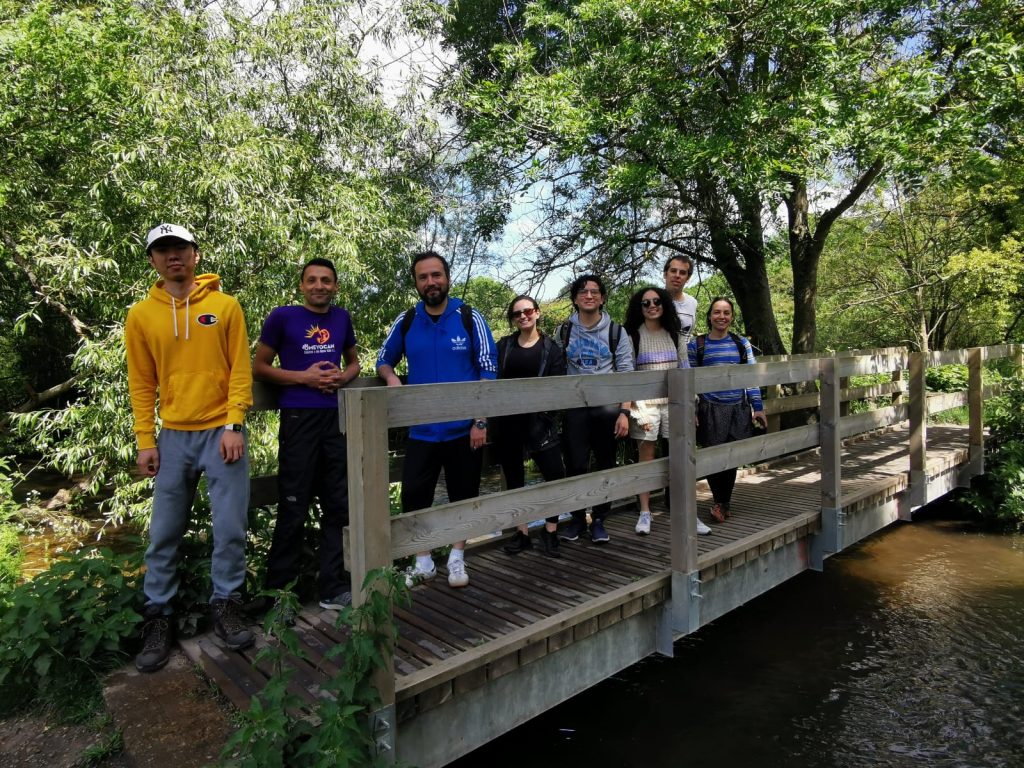
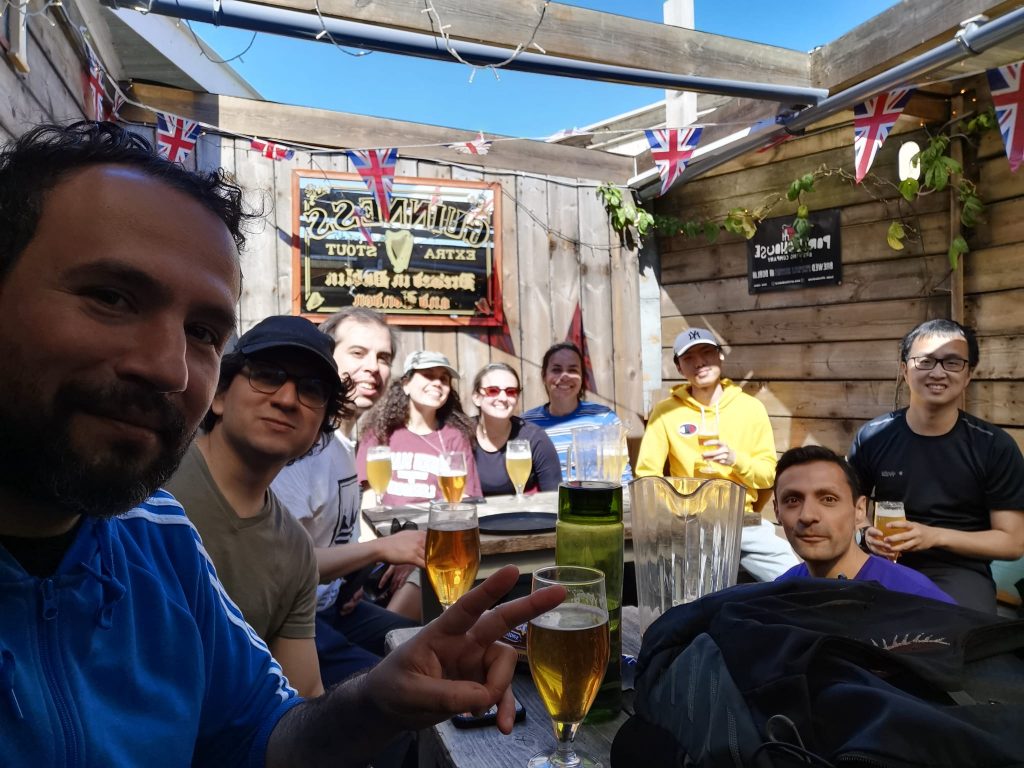
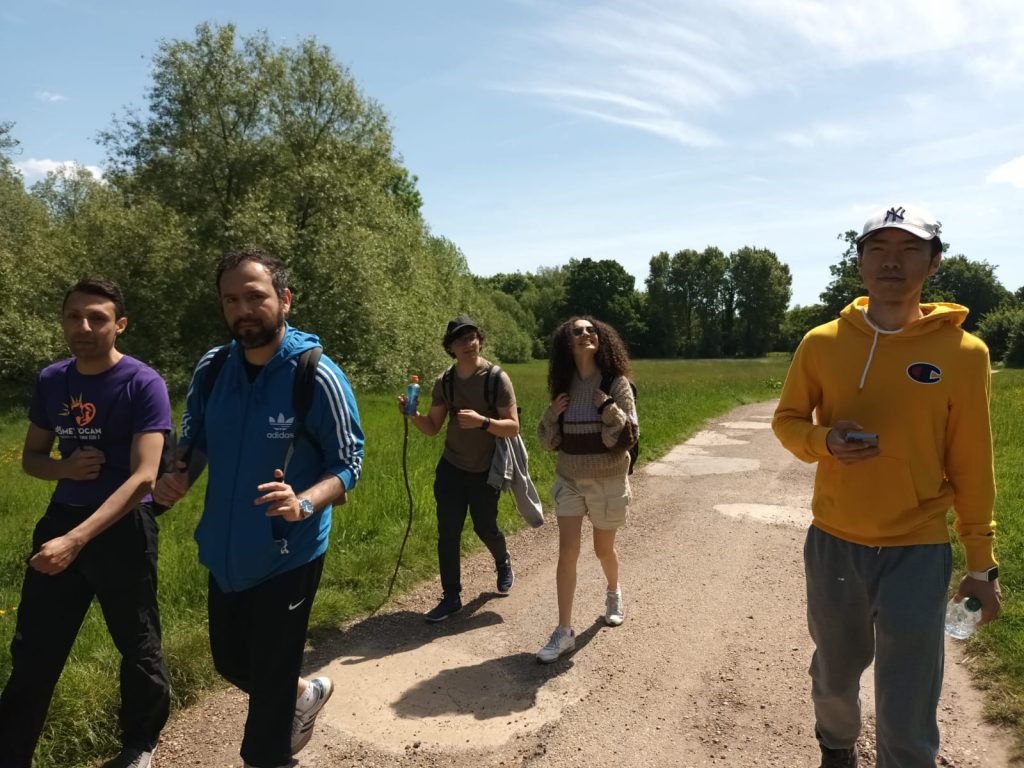
Amazing weather last Friday 20th May 2022! Great for our group hike around the Chess Valley. We managed to do the 15 km that we set ourselves to do – just not the exact path we intended. 😀 it was good fun, though! We will try again soon!
Ana participates in the Pint of Science 2022
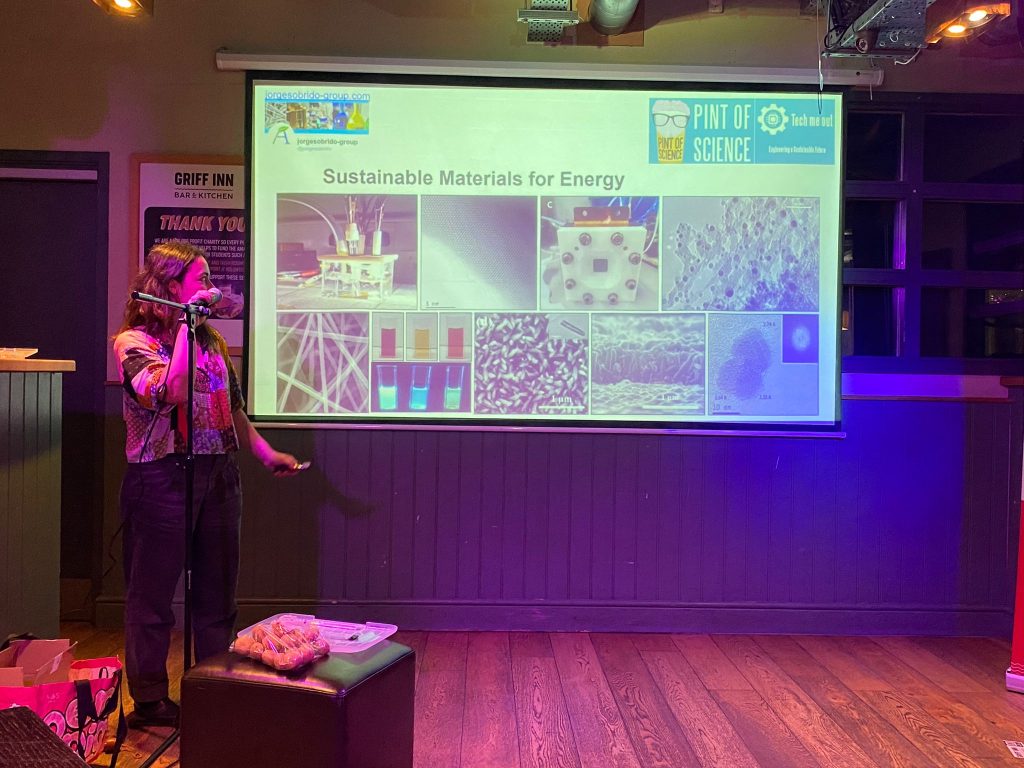
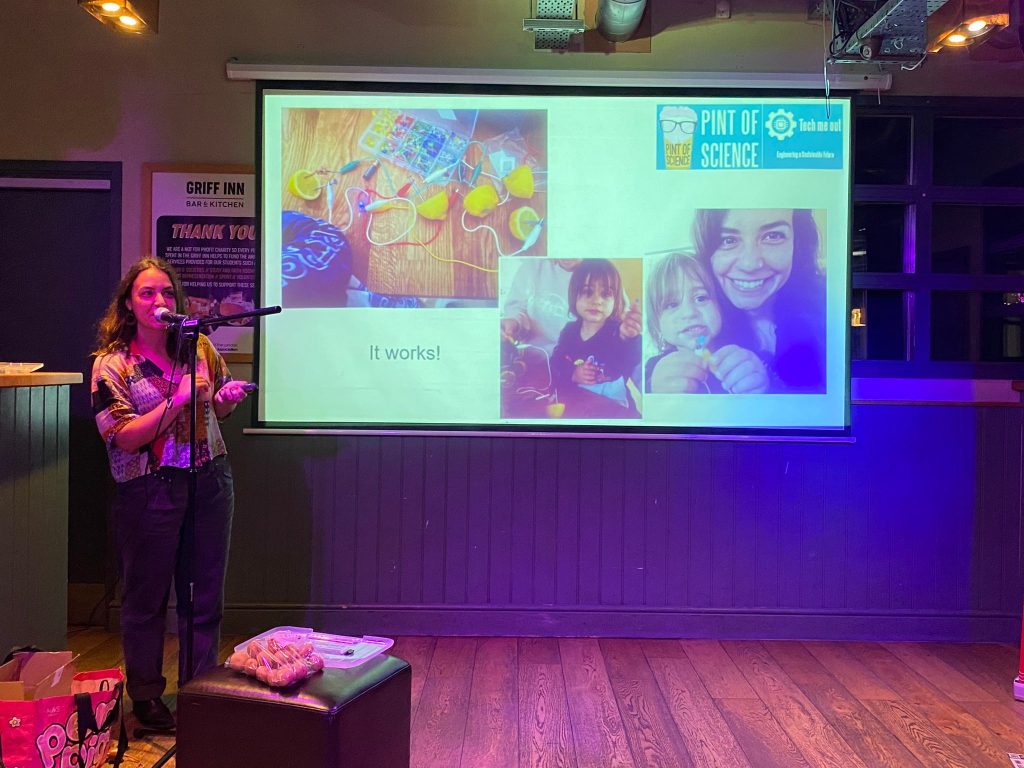
Ana had a fantastic time presenting her work in sustainable materials for energy at this year’s Pint of Science. The audience was able to produce energy enough to light an LED and to make candyfloss – similar to how we produce fibres in our lab! Thank you all for a great evening!
Welcome Hattie!
Welcome to Hattie who joined our group in January 2022 to do a PhD in new freestanding electrocatalysts for CO2 reduction. You can learn more about Hattie here.
